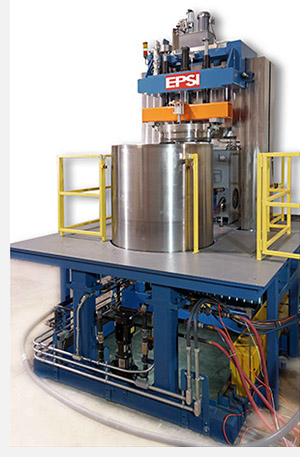Cold Isostatic Pressing Equipment
 In the cold isostatic pressing process, a mold is placed into a chamber that is filled with a working fluid, usually water with a corrosion inhibitor, which is pressurized by an external pump. The pressure chamber must be designed to withstand the severe cyclic loading imposed by rapid production rates and must take into account fatigue failure.
In the cold isostatic pressing process, a mold is placed into a chamber that is filled with a working fluid, usually water with a corrosion inhibitor, which is pressurized by an external pump. The pressure chamber must be designed to withstand the severe cyclic loading imposed by rapid production rates and must take into account fatigue failure.
Equally important is the design of the cover or closure. Not only must it reliably withstand high pressure and cycling conditions, but also it must be designed for quick, easy opening and closing. Several types of closure designs are used to meet these requirements, including threaded, pin, yoke held, and hydraulic clamp types. These are available both in manual and automatic systems.
Pressure vessels may be installed in a pit or above floor installation. Most types are designed and constructed per Section VIII, Division 2 or 3, of the ASME Code and can be certified in accordance with European Conformity (CE) Marking, the European Pressure Equipment Directive, and other international pressure vessel regulations. They are generally available for standard pressures up to 60,000 psi (414 MPa), or higher for special requirements.



